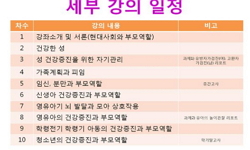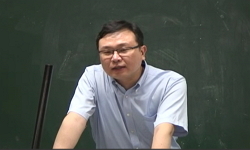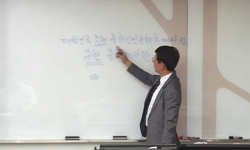This thesis is to study the theory of Kyungbang(京房, BC 77-37), who was a master of Sangsuyeok(象數易, a study of Sang(象, image) and Su(數, number) of Juyeok(周易: the Book of Changes)) in the Han Dynasty era, China. Kungbang substituted a ...
http://chineseinput.net/에서 pinyin(병음)방식으로 중국어를 변환할 수 있습니다.
변환된 중국어를 복사하여 사용하시면 됩니다.
- 中文 을 입력하시려면 zhongwen을 입력하시고 space를누르시면됩니다.
- 北京 을 입력하시려면 beijing을 입력하시고 space를 누르시면 됩니다.
https://www.riss.kr/link?id=T9946704
- 저자
-
발행사항
서울 : 東國大學校 大學院, 2000
- 학위논문사항
-
발행연도
2000
-
작성언어
한국어
- 주제어
-
KDC
141.2 판사항(4)
-
발행국(도시)
서울
-
형태사항
199p. : 삽도 ; 26cm.
-
일반주기명
참고문헌: p. 193-196
- 소장기관
-
0
상세조회 -
0
다운로드
부가정보
다국어 초록 (Multilingual Abstract)
This thesis is to study the theory of Kyungbang(京房, BC 77-37), who was a master of Sangsuyeok(象數易, a study of Sang(象, image) and Su(數, number) of Juyeok(周易: the Book of Changes)) in the Han Dynasty era, China. Kungbang substituted a theory of Five-Elements (metal(金), wood(木), water(水), fire(火) and earth(土)) for eight signs of divination (八卦; Geongwae(乾卦), Gongwae(坤卦), Gamgwae(坎卦). Rigwae(離卦), Jingwae(震卦), Songwae(選卦), Gangwae(艮卦), and Taegwae(兌卦)), observed changes, and developed a new analysis method of Gwae(卦). And he asserted a theory of divination as follows:
First, he developed a new arrangement method of Gwae.(卦)
Juyeok traditionally arranged Gwae to make Geon and Gong, Gam and Ri, Jin and Song, Gan and Tae symmetrized, based on a theory that determines heaven and earth with SeonCheonGwae(先天卦) (indicates SeoGwaeJeon to arrange Gwae order.), harmonizes thunder and wind each other, and does not fight water and fire. This is to setup heaven, then arrange Gwae according to the principle of natural circulation and change. Kyungbang arranged Gwae on the basis of the principle that the young must honor their elders. This is how to arrange Gwae completely differently from a traditional form of the Book of Changes.
Second, he developed how to discriminate me and others by developing SeEungSeol (世應說).
Se(世) indicates me and Eung(應) indicates others. Like this, Se(世) is added to Hyo(爻) because a conflict may be caused like war or human things when to solve Gwae. At this time, traditional Juyeok couldn't separate my Hyo and other Hyo. Kyungbang completely solved the problem by developing SeEungSeol.
Third, he substituted Five-Elements theory for Juyeok to judge fortune easily.
Kyungbang developed 8 signs of the zodiac. He regarded one Gwae as one Ohhaeng (五行: five-elements), divided up-and-down Gwae into six Ohhaeng, added Napgap(納甲) or Napji(納地) to each Hyowi (爻位), and then judged fortune through their destruction and conflict (相生相剋 ). This was originally developed by Kyungbang. This is to construe Gwae actually by using five elements escaping from how to judge hardness and softness based on each Gwae and Hyo. Therefore, this was much hopeful to infer and judge various situations in connection with human things. And his theory got became a center theory of modern Sangsuyeok.
Kyungbang's Ohhaeng Sangsuyeok can explain situation or event development course more minutely than other theories of divination. Considering that Yeok(易) is to predict the fortune and escape bad luck and pursuit good luck, Kyungbang's Ohhaeng Yeok is worth being studied. Kyungbang substituted Ohhaeng of Sang and Su, eight signs, my and other SeEung, fresh and blood, Napgap adding Ohhaeng to Hyo for Gwae in order to judge good and bad luck. He thought that God gives good and bad luck, asserted the union of Heaven and man, and emphasized to comply with the operations of Nature. That is, it is important that man should study reasons and do his best to keep his occupation long. Kyngbang said that he introduced Ohhaeng, Napgap, Jeolhu(The subdivision of the seasion : 節侯) to Juyeok only to judge good and bad fortune. Therefore, his theory is not largely different from Juyeok's system, I think.
목차 (Table of Contents)
- 目次
- 제1장. 緖論 = 1
- 1. 問題 提起와 硏究目的 = 1
- 2. 硏究 範圍 및 方法 = 6
- 제2장. 京房 易의 易學史的 位相 = 9
- 目次
- 제1장. 緖論 = 1
- 1. 問題 提起와 硏究目的 = 1
- 2. 硏究 範圍 및 方法 = 6
- 제2장. 京房 易의 易學史的 位相 = 9
- 제1절. 京房의 事略 = 9
- 제2절. 京房易學의 構成 = 11
- 1. 京房易學의 系譜와 位相 = 11
- 2. 『京房易傳』의 考證 問題 = 17
- 3. 『京房易傳』의 體例 및 編次 = 24
- 제3절. 漢代 象數易의 특징 = 28
- 1. 災異와 術數思想 = 28
- 2. 統治術 = 31
- 3. 隱士의 學問 = 36
- 제3장. 京房의 卦變說 = 38
- 제1절. 8宮說 = 38
- 1. 8宮의 變化 = 38
- 2. 卦變說의 比較 = 47
- 3. 9宮說과의 관계 = 52
- 제2절. 世應說 = 55
- 1. 相應說 = 56
- 2. 宮과 世應과의 관계 = 57
- 3. 爵位說 = 63
- 제3절. 卦主說 = 65
- 1. 京房의 卦主說 = 66
- 2. 王弼의 卦主設 = 69
- 제4절. 互體說 = 72
- 1. 京房의 互體說 = 73
- 2. 互體說의 比較 = 75
- 제5절. 卦次의 比較 = 78
- 1. 『序卦傳』에 의한 배열 = 78
- 2. 伏羲氏의 괘의 순서에 의한 배열 = 81
- 3. 京房의 肉親 순서에 의한 배열 방법 = 83
- 4. 邵康節의 64괘 次序에 의한 배열 = 84
- 5. 『帛書 周易』의 卦次法 = 86
- 제4장. 陰陽五行說 = 88
- 제1절. 陰陽說 = 89
- 1. 陰場의 意味 = 89
- 2. 陰陽二氣說 = 91
- 3. 當位說 = 99
- 제2절. 納甲納地說 = 101
- 1. 干支論 = 101
- 2. 納甲說 = 106
- 3. 納地說 = 114
- 제3절. 飛伏說 = 118
- 1. 각 宮의 飛伏 = 118
- 2. 飛伏說의 規則 = 119
- 제4절. 五行說 = 121
- 1. 五行說 發達 過程 = 121
- 2. 五行의 相牲과 相剋의 原理 = 129
- 3. 六親說 = 134
- 4. 旺休說 = 135
- 5. 卦體說 = 139
- 제5장. 卦氣說 = 142
- 제1절. 卦氣說과 聯關 理論 = 142
- 1. 天人相應說 = 142
- 2. 災異說 = 148
- 제2절. 孟喜의 卦氣說 = 154
- 1. 四正卦說 = 154
- 2. 12月卦 = 161
- 3. 48 卦 = 169
- 4. 6日 7分法 = 171
- 제3절. 建候說 = 173
- 제4절. 積算說 = 176
- 제5절. 京房易의 歸結 = 180
- 제6장. 結論 = 187
- 參考文獻 = 193
- ABSTRACT = 197











